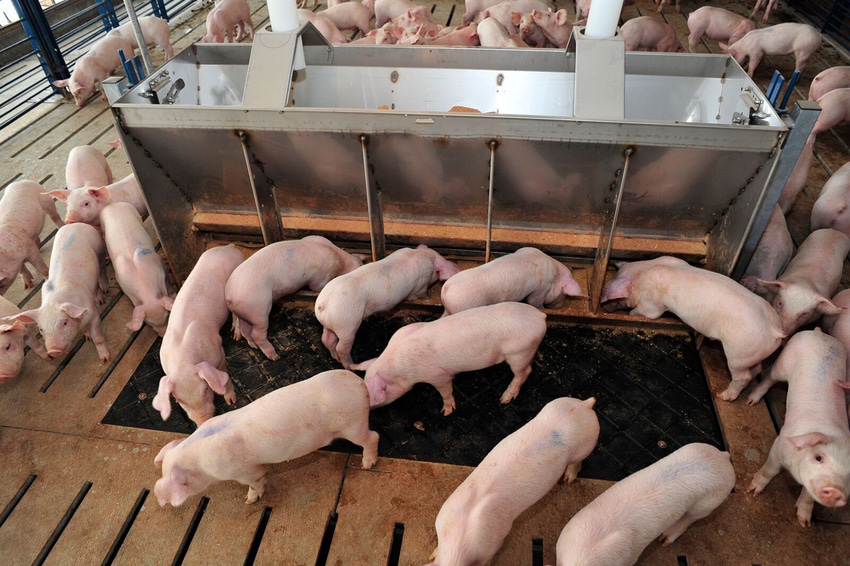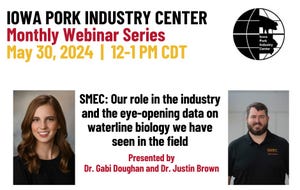Feed costs versus mortality costs
Investment in controlling mortality costs through farm-level monitoring and research needs a comparison of costs and benefits.
February 10, 2022

Recording feed use and counting dead pigs are two basic elements of record-keeping. They are gathered in two different ways, but we generally do not disagree on their definition. Both need to be watched, and we are seeing that feed utilization is improving (especially if mortality effects are removed) while mortality rates are going the other way.
Likewise, the cost of feed is measured regularly to populate profit and loss statements and benchmarking. The cost of mortality and disease is often in a black hole of lack of definition. There is not a place for inventory loss in financial reporting in animal agriculture and methods used for management accounting vary widely, if at all.
Unknown costs are usually underestimated. Investment in controlling mortality costs through farm-level monitoring and research needs a comparison of costs and benefits. Like feed, the costs of disease control and mortality reduction are often readily identified in profit and loss statement as compiling bills and attributing labor costs is relatively simple. The benefits of reduction in disease effects is more complicated – there is no bill when a pig dies.
Thus, it is a difficult to discern if pigs and farms would be better off if more research barns and farm monitoring focused on mortality and disease. This is without taking into account the hard to measure disease concerns such as welfare outcomes and antibiotic use, as well as job satisfaction.
We know that many major opportunities for improvement in profitability and refinement of the pork chain rest in improving the health of the herd. The guidance that feed is the biggest cost and therefore is the biggest opportunity in increasing profitability needs re-examination, as opportunities rest much more in the ability to change a variable than just scale.
The other problem with comparing costs is that mortality and disease are not reported in costs in financial statements. Though feed costs are invariably billed, mortality costs are reflected in lost revenues, which is not billed and rarely recorded. To add to this, the losses are best applied to the space and not the pig in our highly capitalized systems. In other words, it's not only about the dead sow or growing pig, but the unproductive space it leaves behind. Most costs are fixed once a space is filled, and by having it empty the only major saving is in feed.
It is not only mortality that fits this approach but also those pigs that are culled. Early removals may recoup some lost revenue, but far from all. Slow growth and infertility can be added as well to reduce revenue. In many, if not most cases, the expression of a disease ranges from mortality to culls to lowered productivity. The three need to be measured in tandem are related in the decision-making on the farm. Mortality can be reduced by interventions such as antibiotics, but often results in a cull or a pig with low productivity. Culls and productivity are simply separated by an active culling decision. The three together are best assessed as an opportunity cost – that there is a real opportunity to improve margin over feed costs.
There's an approach in productivity management that focusses not on the size of cost, whether billed or an opportunity cost, but on the variability that the manager sees. Capability measures consider not only the scale of the insult to profits, but the range of performance in the system. The argument is that if one sees variability in performance there also exists the capability and opportunity to study the causes of that variation. In our analyses, the capability measures to improve profitability are almost always higher in lost output of pig space than in feed costs.
So how do we study mortality and cull rates along with underperforming pigs? I think the biggest downfall is that we depend on retrospective examination rather than prospective defined risk factors. Too much weight is put on what shows up on a necropsy and we just don't record contributing developmental factors that work together to create a susceptibility to further insults.
However, it all starts with changes in how we view costs. There are costs without financial accounting and once we use those, there are new opportunities to refine and improve pig production.
Source: John Deen, who is solely responsible for the information provided, and wholly own the information. Informa Business Media and all its subsidiaries are not responsible for any of the content contained in this information asset.
You May Also Like



